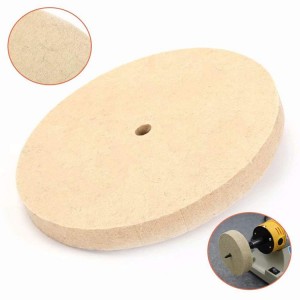The wool felt wheel industry is facing significant challenges due to the volatile nature of raw material prices, particularly those of wool. Fluctuations in wool prices, influenced by factors such as climate change, global demand, and trade policies, can have a profound impact on the profitability and sustainability of wool felt wheel manufacturers. To mitigate these risks, companies are adopting a variety of strategies to navigate these uncertain waters.
One of the key strategies is diversifying the supply chain. Instead of relying on a single source for wool, manufacturers are exploring partnerships with multiple suppliers from different regions. This not only reduces the risk of supply disruptions but also provides the opportunity to negotiate better prices. For example, some companies are sourcing wool from both domestic and international suppliers, taking advantage of price differences and ensuring a stable supply of raw materials. Additionally, by working with suppliers who follow sustainable farming practices, manufacturers can also enhance the environmental credentials of their products, appealing to environmentally conscious consumers.
Another approach is to invest in research and development to find alternative materials or improve the efficiency of wool usage. Scientists and engineers are exploring synthetic fibers and blends that can mimic the properties of wool, offering a more cost – stable option for manufacturing wool felt wheels. At the same time, manufacturers are also developing new production techniques to optimize the use of wool, reducing waste and increasing the yield of each batch. For instance, advanced felting processes are being employed to ensure that every fiber is utilized effectively, minimizing material loss.
Cost – management strategies are also crucial in dealing with raw material price fluctuations. Manufacturers are closely monitoring their production costs, looking for areas where savings can be made without compromising on quality. This may involve streamlining operations, negotiating better deals with suppliers of other components, and implementing energy – saving measures in the production process. By carefully managing costs, companies can maintain their profit margins even during periods of high raw material prices.
In addition, some wool felt wheel manufacturers are passing on a portion of the cost increase to consumers through price adjustments. However, this approach needs to be carefully balanced to avoid losing customers to competitors. Companies are also focusing on value – added strategies, such as improving product quality, enhancing after – sales services, and offering innovative features, to justify price increases and retain customer loyalty.
Navigating raw material price fluctuations is an ongoing challenge for wool felt wheel manufacturers. By implementing a combination of supply chain diversification, research and development, cost – management, and value – added strategies, companies can not only survive in the face of price volatility but also emerge stronger and more competitive in the global market.

Post time: Jun-11-2025
